Ornate Lorikeet
Also known as:
Ornate Lory
Also known as:
Ornate Lory
DID YOU KNOW?
Lories and lorikeets are also known as “brush-tongued parrots” because of their papillae-covered tongue, which allows them to access nectar and pollen with ease.

Trichoglossus

ornatus
Size:
25 cm (9.75 in)
Weight:
110 g (3.8 oz)
Subspecies including nominate:
one
Colour Adult:
Both adults purple/blue crown, forehead and band from eye to ear coverts; bright red lores to cheeks; yellow patch down side of neck behind ear coverts; red occiput; red throat and breast barred with dusty blue; green abdomen to undertail coverts, with yellow scalloping; bright green upperparts and tail; yellow underwing coverts. Cere and eye ring dark grey. Beak orange/red. Eye dark orange.
Colour Juvenile:
Green occiput with light red markings; barring on breast narrower. Beak brown/orange. Cere and eye ring pale grey. Eye brown.
Call:
Calls made in flight are shrill and high-pitched. Also a variety of whistling notes.
More Information:
Content Sources:
CITES
The Lory Link
BirdLife International
Cornell Lab of Ornithology/Birds of the World
Parrots: A Guide to Parrots of the World, Juniper and Parr, 1998
Parrots of the World, Forshaw and Cooper, 1977. 2010 edition
Parrots of the World, Forshaw, 2006.
Parrots in Aviculture, Low, 1992.
Captive Status:
Uncommon
Longevity:
25-35 yrs.
Housing:
3 x 1 x 2 m (9.8 x 3.3 x 6.5 ft) aviary with well drained tiled or concrete floor.
Diet:
Nectar, either a commercial type or homemade from: lactose-free baby cereal, honey and malt extract or molasses, mixed with filtered water and made fresh once or twice daily; fruit once or twice daily including: apple, pear, orange, banana, pomegranate, cactus fruits; one or more of the following vegetables: carrot, corn on the cob or unsalted tinned sweet corn; green leaves such as: Swiss chard, lettuce, sowthistle, dandelion, chickweed; rearing food made from hard boiled egg, wholegrain bread and carrot, all ground to crumbly consistency.
Enrichment:
Provide swings, ropes, ladders and lots of perches; foraging/puzzle toys, noise makers. Provide overhead misters or shallow bowls of water for frequent bathing.
Nest Box Size:
Vertical box 8″ x 8″ x 12″ (20.3 cm x 20.3 cm x 30.5 cm).
Clutch Size:
2
Fledging Age:
9 weeks
Hatch Weight:
—
Peak Weight:
—
Weaning Weight:
—
World Population:
Unknown, decreasing.
IUCN Red List Status:
Least Concern
CITES Listing:
Appendix II
Threat Summary:
Not globally threatened. Is considered to have a medium dependency on forest habitat, and tree cover is estimated to have declined by 17.3% within its range over the past three generations. The species adapts to some degree to degraded and secondary habitats, therefore it is unlikely that its population would be declining at a similar rate to tree cover loss. Nevertheless, as it is also subject to some trapping pressure, it is tentatively suspected that the species’ population size has declined by between 1-9% over the same time frame.
Range:
Sulawesi and larger offshore islands such as Togian, Peleng, Banggai and Tukangbesi Islands, Indonesia.
Habitat:
Found from 300-1000 m (984-3280 ft) in forest edge, secondary forest, bushy open terrain, cultivated areas and towns and upland valleys.
Wild Diet:
Takes nectar, pollen and fruits. Tectona and Casuarina seeds reported.
Ecology and Behaviour:
Seen mostly in pairs or small groups, sometimes associating with Yellow and Green Lorikeets. Regional movements occur, in response to food availability.
Clutch and Egg Size:
2 rounded eggs, 26.0 x 21.5 mm (1 x 0.8 in).
Breeding Season:
September-October.
Related Links:
—


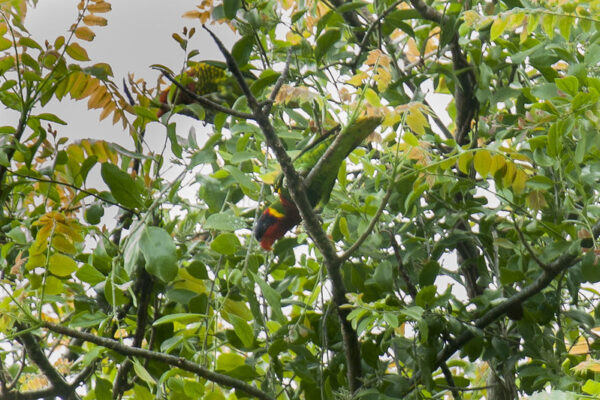
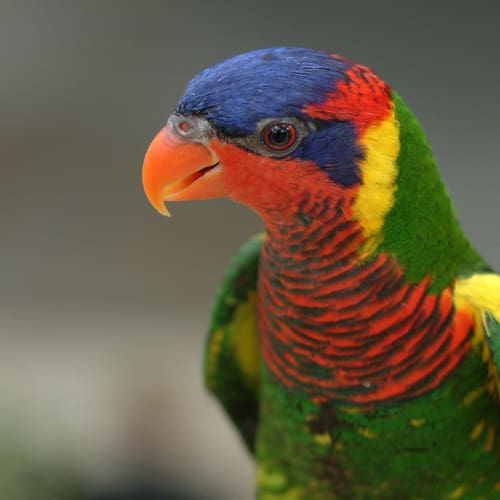
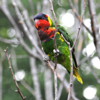
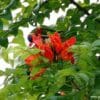
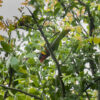
![© Julie Almand (originally posted to Flickr as [1]) [CC BY-SA 2.0] via Wikimedia Commons A closeup profile of an Ornate Lorikeet](https://parrots.org/wp-content/uploads/2023/01/wpt_Ornate-Lorikeet_1226-2-100x100.jpg)